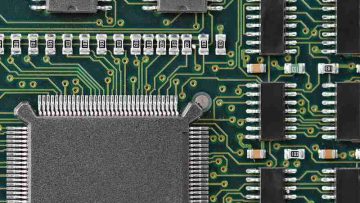Digital disruption is transforming businesses, and how! Aloha Technology Reviews has more. Prior to the emergence of SMACNA, software was made for users in enterprises or small businesses. However, the emergence of SMACIA has triggered the development of software for apps, tablets, and all kinds of mobile devices. Aloha Technology is a global IT services outsourcing firm delivering digital transformation by developing technology to create revenue growth and improve agility by reinventing business functionality. Aloha Technology’s domain expertise spans several business verticals like Retail, Healthcare, telecommunications, Business Intelligence, BFSI, Enterprise Collaboration, Supply Chain, Internet Advertising, and CRM.
What is Aloha Technology?
PAAS providers, such as Aloha Technology, have changed the game for stand-alone ISVs by offering an extensive feature set and reducing the overhead on communication and data transfer for future products. As software companies continue to grow rapidly in the PAAS landscape, we are excited to be providing consumers with IoT, augmented, and virtual reality app opportunities. This is according to Touradha S.M., Aloha Technology’s Head of Communications. The global demand for our products demands that we provide both the scale and reach of a global clientele while simultaneously providing opportunities for end-users to experiment with and learn from innovative new formats of technology. With the presence of several engineering colleges as well as software training institutes in Pune and its reputation as one of the startup hubs of India, Pune is home to a large number of companies offering software products and services.
Software related to instruments:
The digital wave has posed several challenges for independent software vendors (ISVs). Cloud-native apps are slowly encroaching on the territory of native apps and making them less competitive in the market. It is imperative that ISVs adopt a different strategy to acquire or retain users in such a scenario. We will limit our focus to B2B networking infrastructure ISVs, although the same applies to all types of ISVs, including productivity or instrumentation-related software. Providers of cloud services have evolved over time to offer more and more features to enterprise users, evolving into a platform over time. Stand-alone independent software vendors are being invaded by platforms such as service providers like Aloha Technology Technology. B2B networking is an example of how ISVs previously provided a wide range of services similar to DDoS attack prevention, role-based access control, load balancing, network intrusion detection/intrusion prevention systems (IDS/IPS), and geographical availability zones, etc. There are ISVs that specialize in one of these areas, and there are ISVs that specialize in more than one of these areas.
The reasons for this are several:
System architectures of the past aimed to achieve a particular function and were more abstract in design and output. Today, users demand a greater level of customization and enhanced user experience. The logic behind many legacy systems is also very closed and inflexible. In consequence, they interact with fewer technologies and have more vertically integrated functions. As a result of digitalization and the increasing use of cloud-based systems, mobility, analytics, and social media, IT systems have changed in many ways. Business models have changed over the years, so legacy systems with limited interoperability cause operations to be delayed or can rob a company of its competitive advantage.
There are short-term fixes:
Increasing costs of running and maintaining legacy systems encourage organizations to modernize these systems for sustained profitability. There are the usual questions that arise, such as can a lightweight solution be effective? Should we take a more comprehensive approach to replace everything? For example, some organizations might scrape their screens instead of replacing them. Simulating the operator’s actions is achieved using software, while the data is presented in a user-friendly interface. By converting legacy data into a format that other modern applications can understand, Aloha Technology recycles legacy data for further use. However, if this UI must be updated frequently in order to address new specifications, the back-end simulation will also have to be redesigned, and that can be a costly exercise with traditional platforms.





